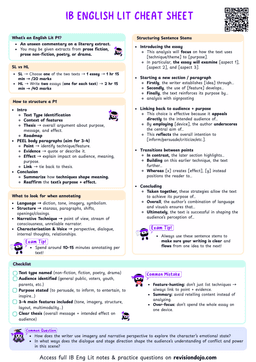Structural Techniques Unique to Poetry
- In poetry, structure is basically the way the poem is built
- Like the number of lines, how the stanzas are split, if there’s a rhyme scheme or rhythm, or whether it suddenly breaks with a pause (that’s called caesura).
- You wanna keep an eye out for things like:
- Enjambment (when the line runs on without punctuation)
- Volta (a turning point or shift in mood/idea)
- Refrains (repeated lines or phrases)
- And even classic forms like sonnets
- All of these are kind of like signals, they usually match some kind of change in feeling, theme, or voice.

Key Structural Elements
Stanza Length
- Think of a stanza as a paragraph in a poem.
- Most of the time, it’s not worth analyzing unless something stands out.
- Here’s when to pay attention:
Short Stanza Length
A short stanza (e.g., 1–2 lines) often creates emphasis or disruption.Example
- In “Belfast Confetti” by Ciaran Carson, long chaotic stanzas are interrupted by a short, shocked question:
- “Why can’t I escape?”
Analysis advice:
- Can signal emotional impact, hesitation, or finality.
- If the entire poem uses short stanzas, it might reflect rigid control, mechanisation, or ritual depending on the poem’s subject.
Long Stanza Length
A single long stanza often creates a sense of flow or uninterrupted thought.Example
- Poem: Punishment by Seamus Heaney
- Stanza: (Opening 21-line stanza, presented in full)
I can feel the tug
of the halter at the nape
of her neck, the wind
on her naked front.
It blows her nipples
to amber beads,
it shakes the frail rigging
of her ribs.
I can see her drowned
body in the bog,
the weighing stone,
the floating rods and boughs.
Under which her naked front
is pubic bone,
the shaved head
like a stubble of black corn,
her blindfold a soiled bandage,
her noose a ring
to store
the memories of love.
Little adulteress,
before they punished you
Analysis Advice:
- May reflect mental immersion, obsession, or urgency.
- Could suggest the speaker’s thoughts are tumbling out without pause.
Line Length
Line length can slow down or speed up pace, and therefore affect tone or mood.
Short Lines
Example- In “Prayer Before Birth” by Louis MacNeice:
- “I am not yet born; forgive me.”
Analysis advice:
- Short lines can isolate phrases, add emotional weight, or slow the reader down.
- Often paired with enjambment to build tension.
Long Lines
Example- In “Howl” by Allen Ginsberg, breathless, sprawling lines reflect chaos and urgency.
- “who poverty and tatters and hollow-eyed and high sat up smoking in the supernatural darkness of cold-water flats floating across the tops of cities contemplating jazz…”
Analysis advice:
- Long lines often increase pace and pressure.
- May mimic unfiltered thought, rant, or stream of consciousness.
Line Breaks
Line breaks happen in almost all poems, but only analyze them when they’re used for effect.Example
- Poem: The Waste Land by T.S. Eliot
- Lines (from Part I: The Burial of the Dead):
"Summer surprised us, coming over the Starnbergersee
With a shower of rain; we stopped in the colonnade,
And went on in sunlight, into the Hofgarten,
And drank coffee, and talked for an hour." (breaks stanza) "Bin gar keine Russin, stamm’ aus Litauen, echt deutsch."
Analysis advice:
- Line breaks can shift focus, pause rhythm, or highlight specific words.
- A break mid-line or mid-phrase draws attention and can create unease.
Enjambment
Enjambment
A line that continues onto the next without punctuation.


